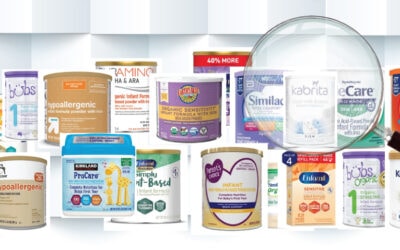Assessing the Top Ten Toxic Exposures in Children
The Pediatric Environmental Health Questionnaire (PEHQ) is a tool for practitioners and parents to aid in assessing children at risk of harm due to environmental toxicants. It is not meant to be all-inclusive, but a screening aid to identify at-risk children and create awareness regarding a prominent and overlooked contributor to chronic health issues.
The questions evaluate the ten most likely sources of childhood environmental toxicants and should be included as part of a complete intake in all children in clinical settings, as well as by parents at home.
It is of primary importance to reduce exposure and the toxic load. Children have increased susceptibility and toxicity from exposures far greater than adults due to their size, childhood behaviors (i.e., exploring their world hand-to-mouth), and lowered detoxification abilities as compared to adults.
Clinical practice recommendations are addressed at the end of the caretaker survey. Suspect risk of health issues from toxicants in the following circumstances:
- Exposure to harmful chemicals throughout pregnancy
- Known nutritional deficiencies or genetic predispositions that affect detoxification and/or excretion
- An allergic-type reaction such as atopic dermatitis, asthma, hives, and/or allergies
Take the Pediatric Environmental Health Questionnaire
Basic Lifestyle Recommendations to Reduce the Toxic Load
The primary goal in the management of childhood environmental toxicity is to reduce the toxic load from the main sources of exposure. Reducing toxicants allows the body to address stored toxins, and often restores balance innately. Thus, minimal interventions may be required, but this is determined on an individual basis.
- Food
- Water
- Air
- EMFs
- House Dust
- Shoes
- Pets
These simple recommendations are a great place to start and address the majority of toxic exposures.
- Organic food whenever possible! If not organic, avoid genetically modified organisms (GMOs) and wash fruit and vegetables thoroughly. Avoid buying meat and other foods in plastic whenever possible. This includes baby formula (see our toxic metal infant formula results study here).
- Avoid school lunches. Send your child to school with lunch from home.
- Avoid processed foods. They are full of pesticides, emulsifiers, and preservatives.
- Eliminate the microwave. If used, do not heat food in plastic.
- Use a water filter. Be sure to replace refrigerator filters every six months.
- Use an air filter. Choose a HEPA filter, if possible, particularly if you live on a busy urban street. Clean the air ducts of your home every year or biannually. Replace the heater filter quarterly (depending on whether you live in an area with a lot of particulate matter pollution). Consider house plants that help detoxify such as spider plants.
- Reduce exposure to Wi-Fi. Shut off the router at night. Hardwire your home whenever possible. Check the location of any 4G or 5G cell towers near your home.
- Take off shoes at the door. Many toxicants are tracked into the home on shoes.
- Use non-toxic products on pets. Eliminate toxic flea collars and other chemical pesticides used with your animal companions.
- Prioritize environmental health. Make it fun by involving the whole family!
Please send in your child’s’ results and be part of an informal survey of the environmental health status of our children. If you provide your contact information, you will receive the results of the survey. It will be posted on gmoscience.org as well.



